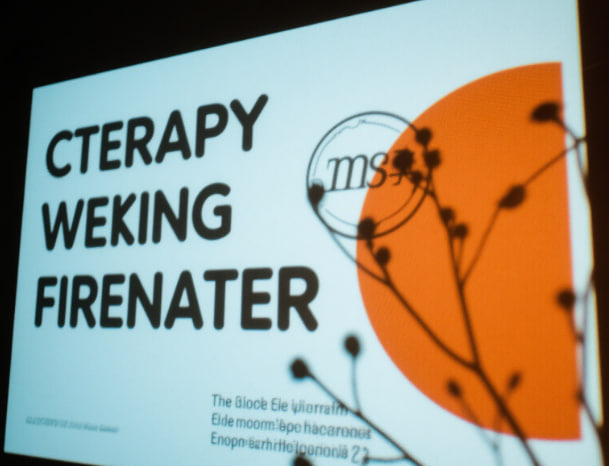Have you noticed an interesting phenomenon in our daily interactions with others? Some people make you feel close when they speak, while others make you feel inexplicably annoyed? Or, sometimes you feel like other people are always targeting you, but in fact, the other person may not have meant it at all. In psychology, there is actually a clear explanation for this situation – the projection effect.
Put simply, the projection effect refers to the fact that we unconsciously “project” our inner emotions, values, and even personality traits onto other people, which affects our judgments and interactions with them. The way you see other people is actually very often how you see yourself.
What is the “projection effect”? Understanding in everyday language
The projection effect is a common cognitive bias in psychology. It means that we often unconsciously project our inner thoughts, emotions, and attitudes onto other people.
For example, if you’re in a good mood today, you’ll see everyone around you as sunny. But if you’re in a bad mood, even the kindest gesture will seem like a stab in the back. It’s not that other people have changed, but your mood has affected your judgment.

In 1974, psychologist Shiffbauer conducted an interesting experiment. He asked a group of university students to watch different types of movies in two groups. One group watched a comedy to make them happy, while the other group watched a horror movie to make them nervous. He then asked the two groups to look at a photo of the same group of people and judge the expressions on their faces. As a result, the group in a good mood thought the people in the photo were happy, while the group in a nervous mood thought the people in the photo were scared.
This experiment clearly illustrates one thing: the world we see is not necessarily objective, but a subjective experience influenced by our own emotions.
Several common forms of the projection effect
The projection effect does not only have one manifestation, but can actually penetrate our lives from multiple angles. Here are the most common types:
1. Projection of similar personalities: we like “people who are similar to us”
We often feel more comfortable with people who have similar personalities, interests and values. This is what we mean when we say that we “click” or “have a good vibe”. On the other hand, we may feel uncomfortable with people who have completely different personalities, and even instinctively reject them.
For example, someone who likes to be quiet may find someone who likes to talk and show off “too loud and flashy”. But this is not necessarily a problem with the other person, but rather with us judging others based on our own preferences.
2. Emotional projection: we project our emotions onto others
When you like someone very much, you unconsciously think that they have all kinds of good qualities. Even if they do something small that is wrong, you may choose to ignore it or forgive them. And when you dislike someone, even if they just sneezed, you may think that they are “impolite” or “faking illness”.
This kind of emotional projection shows that sometimes we are not seeing the “real him” but the “emotional him”.
3. Wishful thinking: We want others to be like us
For example, if you really like a certain type of movie, you will want your friends to watch it with you and hope that they will also find it enjoyable. If the other person doesn’t share your enthusiasm, you may feel a little disappointed.
This kind of wishful thinking is actually us projecting our own interests, dreams or ideals onto other people.
The impact of the projection effect: it is both a mirror and a trap
The projection effect is like a mirror: what we see in others is often a reflection of ourselves. But it is also a trap that can affect our relationships, workplace performance, and even self-perception.
In the workplace: a trigger for misunderstanding and conflict
A superior may sometimes impose their own standards and styles on their subordinates. For example, if they place a high value on efficiency, they may think that “slow is lazy”, even if the other person’s working style is just different. The subordinate, on the other hand, is prone to take their boss’s assumptions as their own, which causes unnecessary anxiety.
Colleagues also tend to “project” onto each other because of their different positions. For example, in a project, one person insists on a creative approach while the other insists on cost control. The two sides may start to negate each other and even attack each other personally. But in fact, they are just representing different roles and responsibilities.
In family relationships: misunderstandings of love and conflicts of expectations
Parents often project their life ideals and unfulfilled dreams onto their children. For example, if they themselves were unable to become a doctor, they hope that their children will study medicine; if they were very thrifty, they hope that their children will not spend money recklessly. This approach of “for your own good” often arouses the resentment of children.
Children’s resistance is not necessarily due to their lack of understanding, but rather to the fact that they are searching for their own identity in their own way. Many family conflicts are actually emotional kidnappings under the influence of the projection effect.
In friendship and love: the gap between idealisation and reality
In the early stages of a relationship, we often have extremely high expectations of the other person and think that they are perfect. This is actually a typical example of “ideal projection”. However, once we start to get to know each other in real life, we begin to realise that the other person is not what we had imagined, and we become disappointed or even resentful.
This is why we see “stars” in the beginning of a relationship, but later “see every fault”.
Projection can also be positive
Although projection can lead to misunderstandings and prejudices, it is not all negative. If we are aware of its existence and channel it correctly, it can also be a tool for self-understanding and empathy.
In art appreciation: what you see is actually you
We are moved by a novel or a film not because it objectively expresses some truth, but because we see ourselves in it.
For example, when you read Jane Eyre, you are moved by her perseverance, perhaps because you have also endured injustice in reality, or because you also yearn for freedom and equality. This empathy is actually a kind of positive “emotional projection”.
In personal growth: the self in the mirror allows us to see our blind spots
Sometimes you really dislike a certain behavior, such as someone lying or being stingy. But if you calm down and think about it, you may realize that the things you dislike may have been things you yourself have done at some point. What you dislike is a kind of “shadow self”.
This realization is a very precious opportunity for growth.
How can we reduce the negative impact? Four practical methods
Now that we understand the projection effect, how can we reduce its negative impact in our daily lives? Here are four simple and practical suggestions:
1. Improve self-awareness and understand the source of your emotions
Self-awareness is the first step. You can understand your true values and emotional triggers by keeping a diary, taking a psychological test, or quietly reflecting on yourself.
When you realise “why I’m angry” and “why I dislike someone”, many misunderstandings will naturally be resolved.
2. Express yourself, don’t interpret for others
When communicating, the best approach is not to guess what someone else is thinking, but to express how you feel. For example: “I heard what you said and it made me feel a bit uncomfortable,” rather than “Are you looking down on me?”
Not defining others can greatly reduce misunderstandings in communication.
3. Learn to pause judgment, don’t let emotions get the better of you
When you have a negative impression of someone, don’t rush to make a judgment. Stop and ask yourself, “Do I dislike him as a person, or is it because he reminds me of a certain experience that I don’t like?”
Avoiding ‘generalizations’ and ‘emotion-driven decisions’ is the key to mature interpersonal relationships.
4. Use positive ways to guide projection and become a better version of yourself
Since projection cannot be completely avoided, it is better to use positive thinking to guide it. For example:
When you turn external stimuli into internal motivation, you truly take control of your emotions.
Final thoughts: The world is a mirror, you are the truth
Many people say, “Prejudice in the human heart is like a mountain,” but in fact, this mountain is the unresolved issues within ourselves. The more reluctant we are to face a part of ourselves, the more likely it is to appear in others. What we hate and reject is often the part of ourselves that we are unwilling to admit.
There is no absolute truth in the world, only different perspectives. It’s like that famous visual diagram: do you see a young woman or an old woman? It all depends on which perspective you’re standing from.
So, if you feel that the world is not so beautiful, maybe it’s not the world that needs to change, but we ourselves can grow a little bit first. The more open-minded we are, the gentler the world will become; the more accepting we are of ourselves, the more we can accept others.
The projection effect will not disappear, but you can learn to view it with a more mature perspective. Stop regarding others as the answer and instead see them as a bridge to yourself. When you stop looking for salvation in others, you will discover that the light you once projected is actually illuminating you as well.

